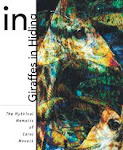BP and the government say the spill is fast disappearing—but dramatic new science reveals that its worst effects may be yet to come.
WE'RE SWINGING ON ANCHOR this afternoon as powerful bursts of wind blow down through the Makua Valley and out to sea. The gales stop and start every 15 minutes, as abruptly as if a giant on the far side of the Hawaiian island of Oahu were switching a fan on and off. We sail at the gusts' mercy, listing hard to starboard, then snapping hard against the anchor chain before recoiling to port. The intermittent tempests make our work harder and colder. We shiver during the microbursts, sweat during the interludes, then shiver again from our own sweat.
I'm accompanying marine ecologist Kelly Benoit-Bird of Oregon State University, physical oceanographer Margaret McManus of the University of Hawaii-Manoa, and two research assistants aboard a 32-foot former sportfishing boat named Alyce C. On the tiny aft deck, where a marlin fisher might ordinarily strap into a fighting chair, Benoit-Bird and McManus are launching packages of instruments: echo sounders tuned to five frequencies; cameras; and a host of tools designed to measure temperature, salinity, current velocity, chlorophyll fluorescence, and zooplankton abundance, all feeding into computers lashed into the tiny forward cabin
Despite the impressive technology crammed aboard the boat, its deployment is pure 19th century. At any given time, two of us man the aft winch, launching the equipment overboard by hand, feeding out dual lines of nylon and coaxial cable, slowly wearing calluses into our gloves as we ease the instruments through the water column at roughly 33 feet per minute. Six feet shy of the bottom, 74 feet down, the rig is hauled back up, collecting data the whole way. The process is repeated around the clock for the next 24 hours, a procedure either monotonous or meditative, depending on your frame of mind. Near the bottom, McManus calls, "Making a mark." She might as well be calling "mark twain."
But whereas old-time riverboat captains sounding with lead-weighted ropes were gleaning information about safe shipping channels and shifting sandbars, we're sounding for signs of life. To the untrained eye, the incoming echo soundings appear as waves of blue, green, and yellow scrolling horizontally across our computer monitors. To the trained eye, they appear as layers of life flooding in on darkness. Benoit-Bird points toward the screens, each one tuned to read the sonar signature of a different-size life form. "That layer is zooplankton," she says. "And that layer is fish." Suddenly, I can see a crude facsimile of the migrations of the nighttime sea.
 Creatures living in the deep scattering layer of the Gulf of Mexico include juveniles like this octopod.
Creatures living in the deep scattering layer of the Gulf of Mexico include juveniles like this octopod.  Lantern fish like this one are a keystone species in the marine food web.
Lantern fish like this one are a keystone species in the marine food web. DSL species like hatchetfish have light-emitting organs.
DSL species like hatchetfish have light-emitting organs.Most of the marine life familiar to us at the surface inhabits the epipelagic zone, the sunlit realm, stretching down to about 600 feet. Yet many whales, dolphins, seals, sea turtles, sharks, manta rays, billfish, and smaller predatory fish are nocturnal hunters, dependent on the mysterious movements of a vast community of organisms known as the deep scattering layer (pdf), or DSL. This aggregation of life forms was unknown until the 1920s, when early hydrographers mapping the ocean with sound encountered a daytime "seafloor" around 3,300 feet, which rose perplexingly toward the surface at night. Named for its echo-reflecting signature, the DSL was eventually recognized by marine biologists in 1948 to be layers of living creatures hiding on the cusp between perpetual twilight and darkness. .......... (read on)
The BP Cover-Up | Mother Jones












No comments:
Post a Comment